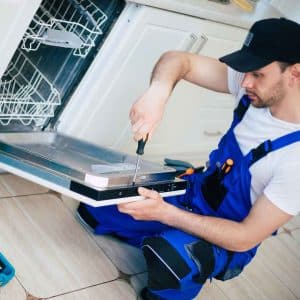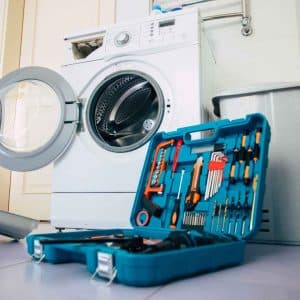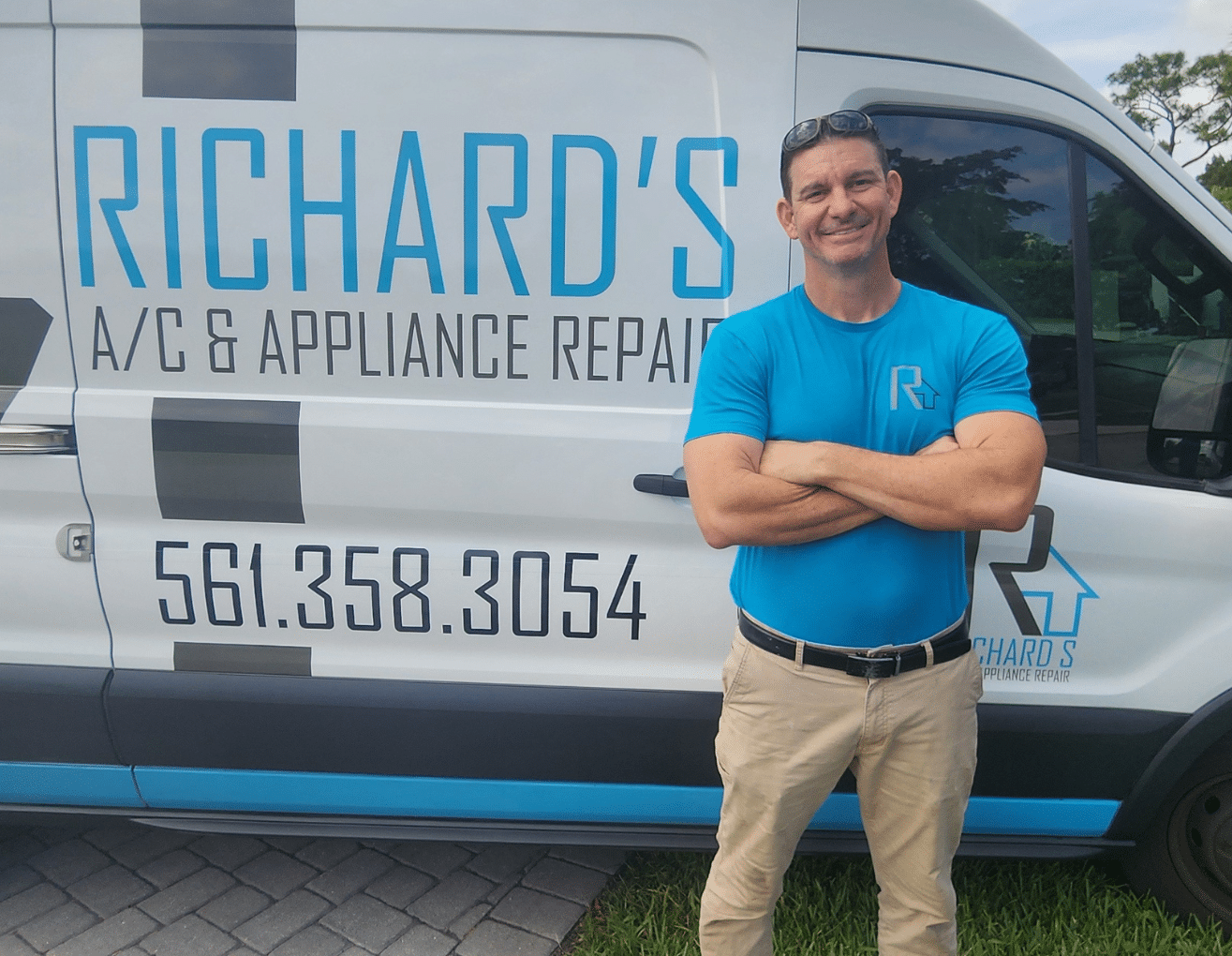Summer is here, and for many of us, that means planning a well-deserved vacation. As you work through your pre-trip checklist—packing bags, arranging for pet sitters, stopping the mail—one crucial question often arises for Florida homeowners: “What should I do with my air conditioner while I’m away?” It’s a debate between saving money on energy costs versus protecting your home from the relentless summer heat and humidity.
This decision is more important than you might think. Setting your thermostat incorrectly can not only negate your energy savings but also put your home at risk for damage. The good news is that there is a smart, simple strategy to follow. This guide will walk you through the dos and don’ts of managing your AC while on vacation, ensuring you can relax and enjoy your time away, knowing your home is safe and you’re saving money. Trust the experts at Richard’s AC to help you find that perfect balance.
The Big Question: Should You Turn Your AC Off Completely?
Let’s address the most common temptation right away. To save the most money, it seems logical to just turn your air conditioner completely off before you leave. We must state this directly and emphatically: Do NOT turn your AC off completely when you leave for vacation in the summer.
While you will certainly save on electricity in the short term, you expose your home to a much bigger and more expensive threat: uncontrolled Florida humidity. Here’s why turning off your AC is a bad idea:
- Extreme Humidity Buildup: Your air conditioner doesn’t just cool the air; it removes a massive amount of moisture. Without your AC running periodically, your sealed-up home will quickly trap Florida’s thick, humid air. Indoor relative humidity can soar to 80-90% or higher, matching the jungle-like conditions outside.
- Mold and Mildew Growth: This combination of intense heat and extreme humidity creates a perfect petri dish for mold and mildew. Mold can begin to grow on surfaces like drywall, furniture, clothing, and books in as little as 24-48 hours. Returning home to a musty smell is the best-case scenario; the worst-case scenario involves a costly mold remediation project.
- Damage to Home Furnishings: High humidity is destructive. It can cause hardwood floors to swell and buckle, warp wooden furniture and cabinetry, damage sensitive electronics, and even cause photographs to stick together inside their albums.
- A Brutal Return: When you get back from your relaxing trip, your home will be an oven. Your AC will then have to run non-stop for many hours, or even a full day, to remove all the accumulated heat and humidity, putting immense strain on the system and offsetting a significant portion of the energy you “saved.”
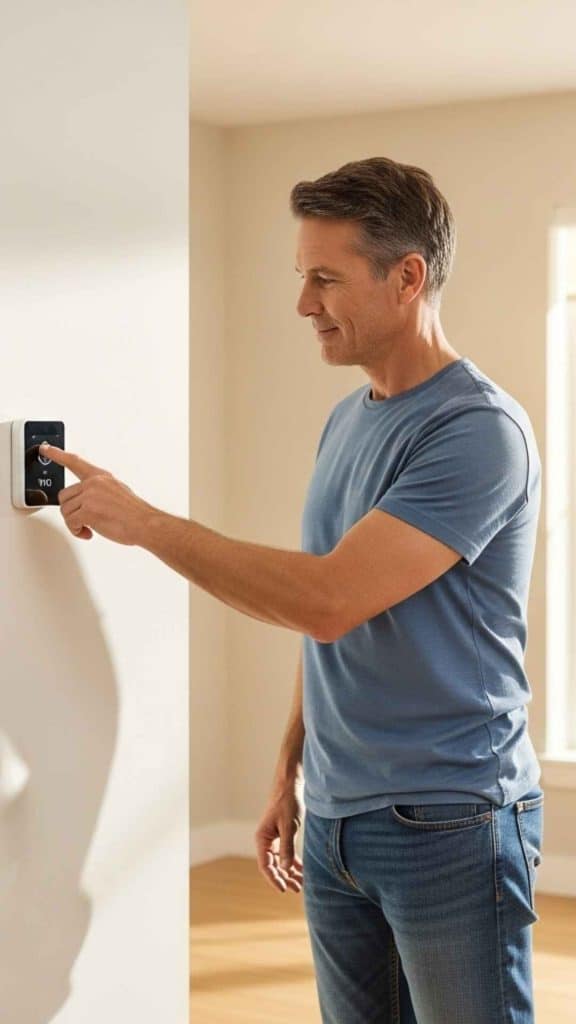
The "Just Right" Strategy: Finding Your Ideal Vacation Temperature
The goal is to find a balance—a temperature setting that is high enough to provide significant energy savings but low enough to protect your home from humidity and heat damage.
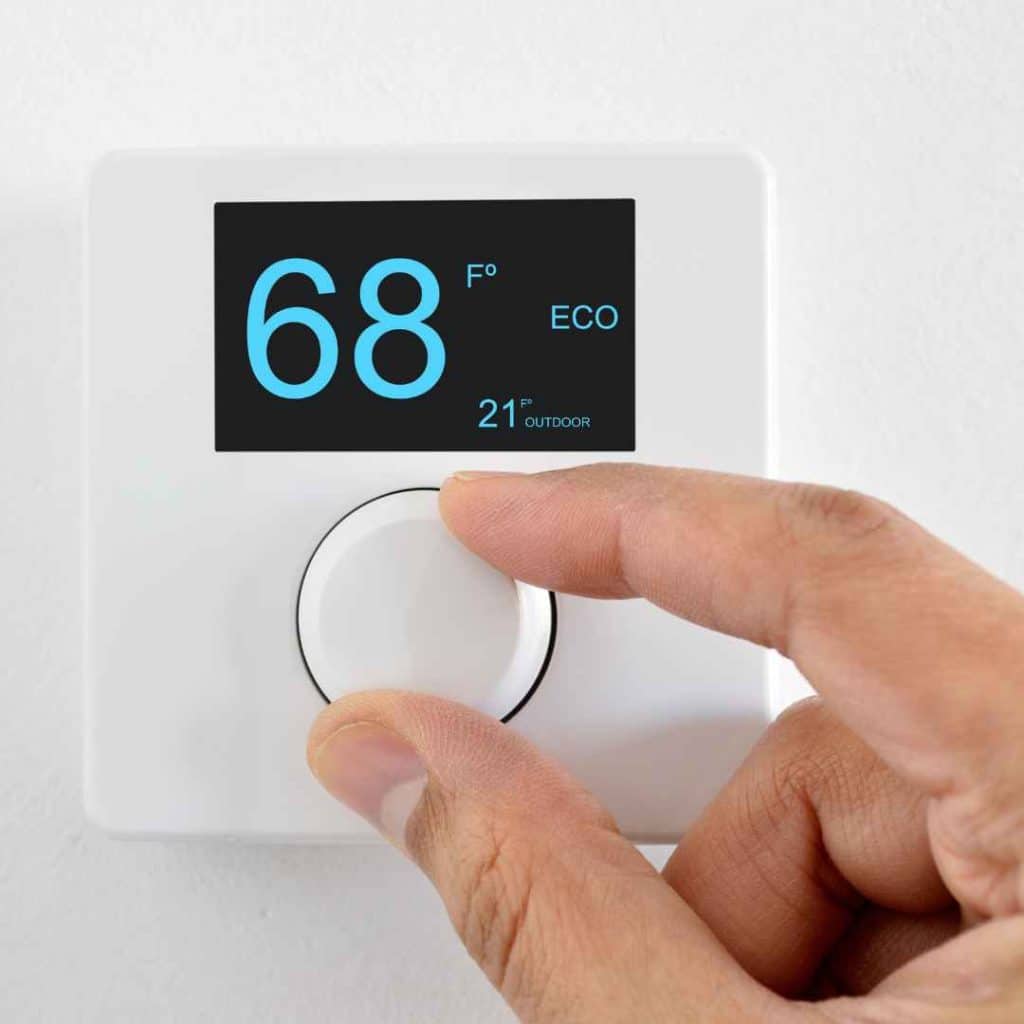
The Recommended Temperature Range
For most Florida homes, the expert-recommended temperature range to set your thermostat to while on vacation is between 82°F and 85°F.
Why This Range Works
This setting is the sweet spot for protection and savings. At 85°F, your home is warm enough that the AC will not run frequently, saving you a considerable amount on your energy bill compared to your normal “at-home” setting. However, it’s cool enough that on the hottest days, the AC will still cycle on periodically. These occasional cycles are absolutely critical because they will continue to pull moisture out of the air, keeping the indoor humidity at a safe level (typically below the 60% threshold where mold growth accelerates). This setting acts as a protective measure, not a comfort measure.
Leveraging Your Thermostat's Features for a Worry-Free Vacation
How you implement this strategy depends on the type of thermostat you have.
If You Have a Programmable or Smart Thermostat...
This is the ideal scenario, as these thermostats are designed for this exact purpose.
- Use the “Vacation” or “Hold” Feature: Most programmable and smart thermostats have a “Vacation,” “Away,” or “Hold” mode. Use this function to set your vacation temperature (e.g., 85°F) for the entire duration of your trip. This overrides your normal schedule without you having to delete it.
- The Ultimate Smart Thermostat Tip: Here’s how you get the best of both worlds—savings while you’re away and comfort when you return. With a Wi-Fi-enabled smart thermostat, you can schedule the temperature to begin dropping back to your normal comfort level (e.g., 76°F) a few hours before you are scheduled to arrive home. You can do this from your smartphone app while you’re on the way back. This way, you walk into a cool, comfortable house instead of an 85-degree one. If you’re interested in this level of convenience, Richard’s AC can help you choose and install the right smart thermostat for your home.
If You Have a Manual Thermostat...
The process is still simple, just less automated. Before you walk out the door, manually slide the temperature setting up to your chosen vacation temperature (e.g., 85°F). The main drawback is that you won’t be able to remotely adjust it or have it automatically cool down before your return.
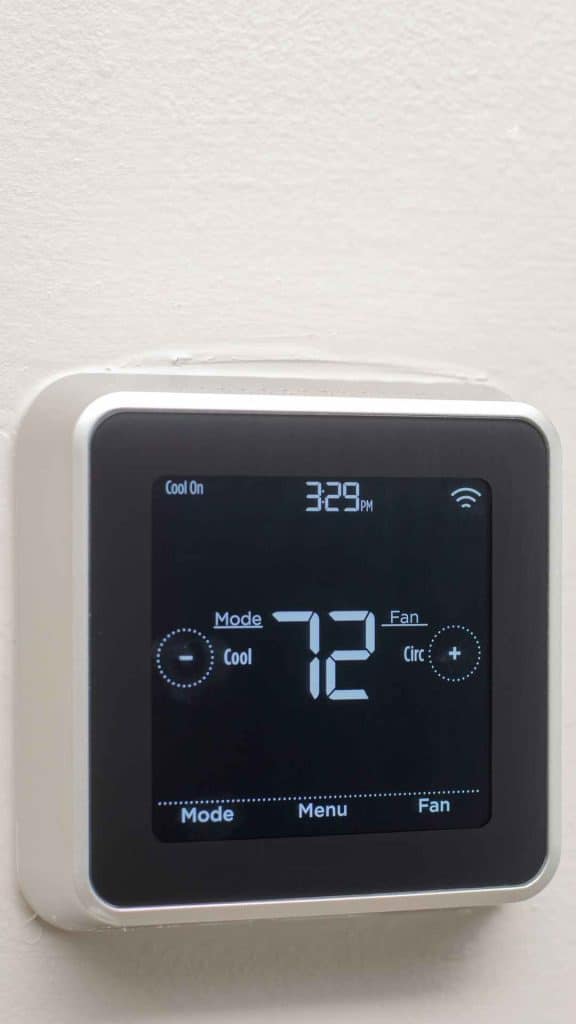
Your Pre-Vacation AC Checklist
Before you lock the door and head out, run through these quick but important steps to help your AC perform efficiently while you’re gone:
Change the Air Filter
You don’t want your AC to struggle with a clogged filter if it needs to run while you’re away. A fresh, clean filter ensures that any cooling cycles will be efficient and won’t strain the system.
Check the Outdoor Unit
Take a quick walk outside and make sure the area around your condenser unit is clear of any debris like fallen palm fronds, lawn clippings, or encroaching plants. Clear airflow is key to efficiency.
Close Blinds and Curtains
This is a crucial and easy energy-saving tip. Closing your window coverings, especially on south and west-facing windows that get direct sun, will dramatically reduce solar heat gain. This means less heat enters your home, and your AC will have to run even less to maintain your vacation temperature setting.
Ensure Interior Vents Are Open
Double-check that all the air vents inside your home are open and not blocked by furniture or suitcases. This allows for proper air circulation when the system does run.
The Ultimate Peace of Mind: A Pre-Vacation Check-Up
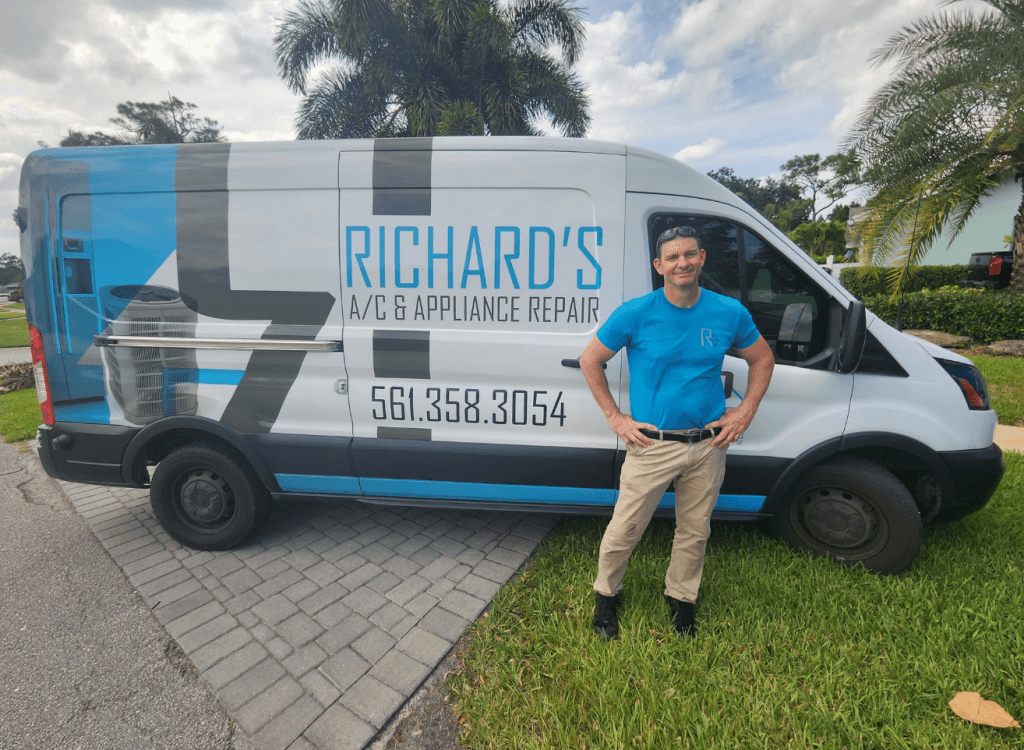
If you’re going to be away for an extended period (two weeks or more), or if your AC system is older and you have concerns about its reliability, scheduling a professional maintenance visit with Richard’s AC before you leave can provide ultimate peace of mind. A technician can perform a full tune-up, ensure the condensate drain line is clear and won’t clog while you’re gone, and give the system a clean bill of health. It’s the best way to ensure your home’s most important protective appliance is ready to stand guard while you’re away.
Enjoy your well-deserved time away! And if you want total peace of mind before you go, we’re here to help.
Contact Richard’s AC to schedule a pre-vacation AC check-up or to inquire about upgrading to a smart thermostat.


